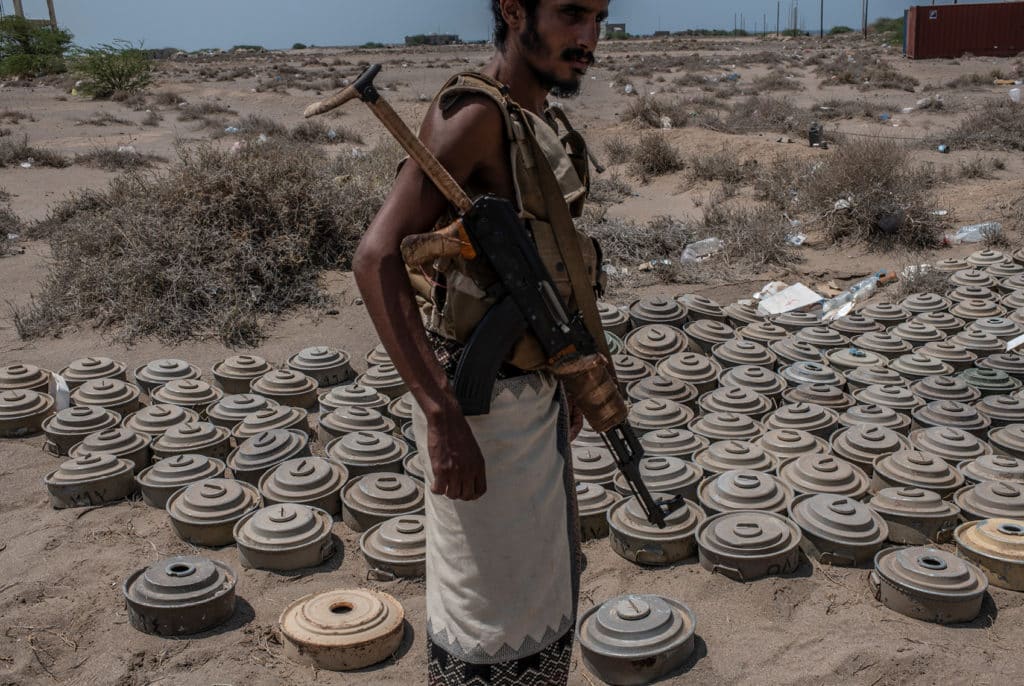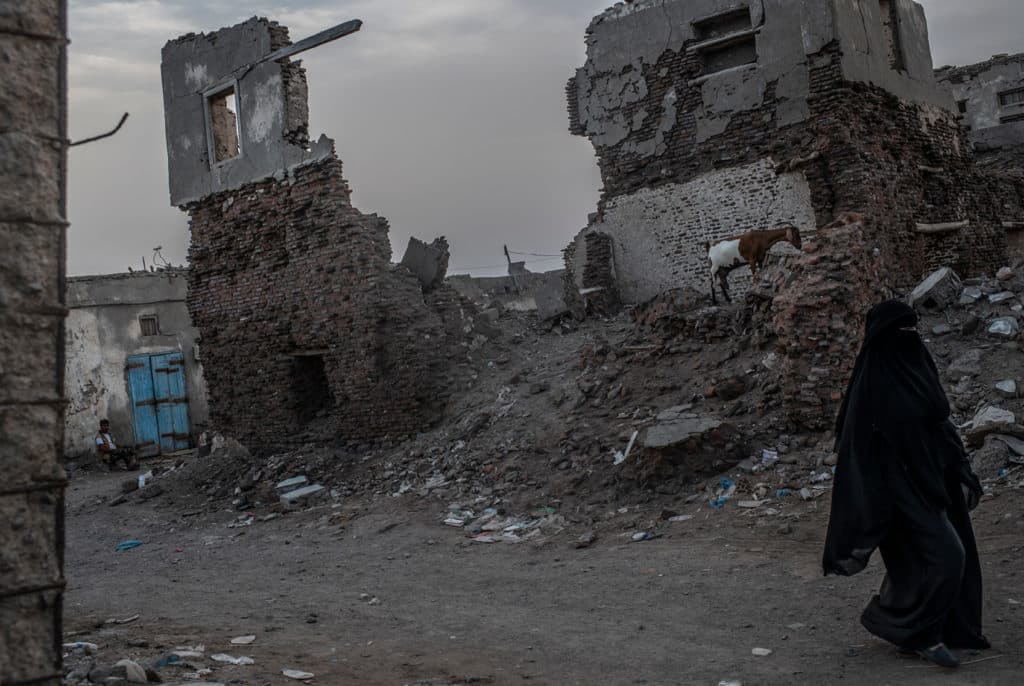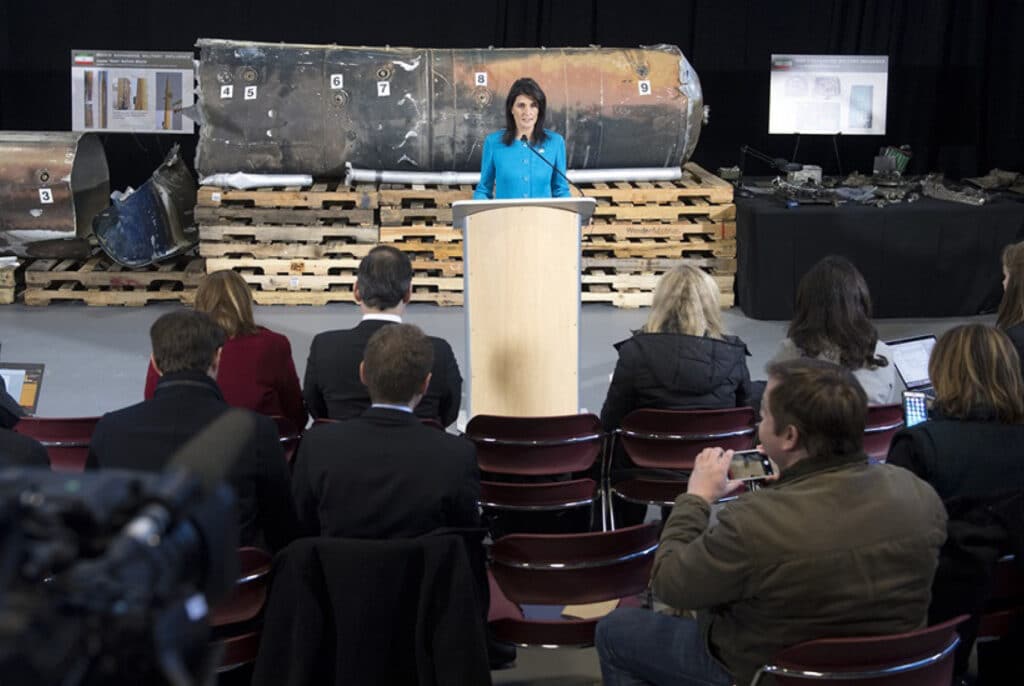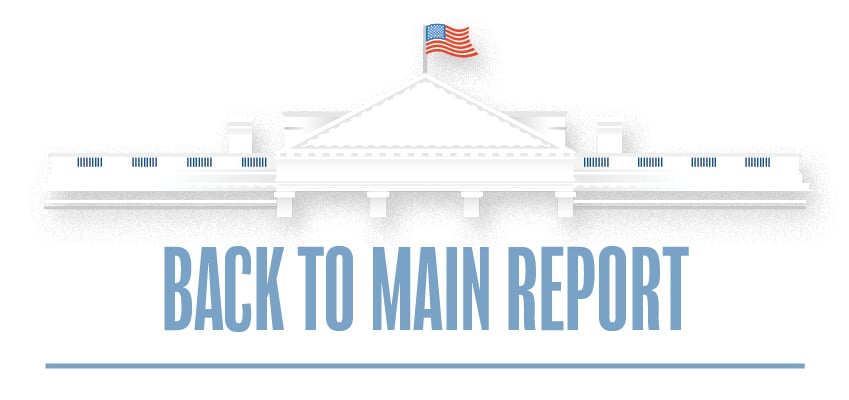January 31, 2019 |
Midterm Assessment: Yemen
Contents
January 31, 2019
Midterm Assessment: Yemen
Current Policy
The Trump administration’s policy toward Yemen is broadly consistent with the Obama administration’s approach. For more than a decade, the U.S. has worked with Yemeni partners and Gulf state allies to address the threat posed by al-Qaeda in the Arabian Peninsula (AQAP) and – later on – the Islamic State. Following the outbreak of civil war in 2015, the U.S. supported the Saudi- and Emirati-led coalition fighting on behalf of Yemen’s recognized government against both the Iranian-backed Houthi movement and other rebel forces.
Under Obama, the U.S. deployed special operations forces to support the counterterrorism campaign led by the United Arab Emirates (UAE). This policy continued into the Trump presidency. The U.S. also supports the UAE campaign with intelligence, surveillance, aerial refueling, and medical support. Separately, the United States conducts its own airstrikes against AQAP and Islamic State targets. During the first year of the Trump administration, the United States conducted a record 131 strikes in Yemen, more than the previous four years combined, although the pace slowed considerably in 2018.1
In 2015, the U.S. began to provide intelligence and logistical support to Saudi and Emirati forces engaged in a separate campaign to restore the internationally recognized government of President Abed Rabbo Mansour Hadi, which the Houthis had ousted from the capital of Sanaa. U.S. logistical support has included refueling for Saudi warplanes, which has led both American and foreign critics to charge that the U.S. bears significant responsibility for the civilian casualties inflicted by Saudi airstrikes. The airstrikes have also caused significant damage to local infrastructure, limiting the supply of clean water and aggravating the spread of diseases such as cholera. In November 2018, the Pentagon announced that it will no longer conduct mid-air refueling for coalition warplanes, in large part a reaction to congressional outrage triggered by the murder of Saudi journalist Jamal Khashoggi by agents of the Saudi government.
There has been a backlash against the Saudis – and by extension, the U.S. – for worsening Yemen’s humanitarian crisis. In particular, the coalition blockade of the Red Sea port of Hudaydah, the main entry point for humanitarian assistance to Houthi-controlled areas, led to a groundswell of criticism. The Trump administration publicly urged Riyadh to lift the blockade, but did not threaten to discontinue U.S. support.2
Under withering criticism, the U.S. worked to improve Saudi targeting capabilities to reduce the civilian casualty toll. In 2018, Congress made funding for refueling operations in Yemen contingent on the secretary of state’s certification that the Saudis and Emiratis were making progress in reducing civilian casualties and alleviating the humanitarian crisis. In September, Secretary of State Mike Pompeo issued the certification, overruling military and regional specialists at the department who considered it unmerited.3
The administration has also worked to raise awareness of Iran’s illicit shipments of arms to the Houthis, which violate multiple UN Security Council resolutions. The administration emphasized the threat posed by advanced ballistic missiles whose increased range has enabled the Houthis to reach targets deep inside Saudi Arabia. In December 2017, U.S. Ambassador to the United Nations Nikki Haley made public physical evidence, including burnt-out remains of an Iranian-produced ballistic missile, demonstrating Iranian culpability.4 According to the Saudi Foreign Ministry, the Houthis have fired more than 200 ballistic missiles and tens of thousands of other munitions into the kingdom.5

A fighter with the Tariq Salah Forces a militia aligned with Yemen’s Saudi-led coalition-backed government, shows Houthi rebel landmines the militia had recovered, at an outpost a few kilometers from the frontline on September 22, 2018 in Al-Himah, Yemen. (Photo by Andrew Renneisen/Getty Images)
Assessment
Despite American efforts, the terrorist threat in Yemen remains substantial while Iranian influence continues to grow. Underlying both problems is the collapse of the Yemeni state amidst a multi-sided civil war whose prospects for resolution via UN-led negotiations seem poor. The U.S. has also struggled to find competent partners to lead the campaign in Yemen, with the Saudi role becoming extremely controversial given the kingdom’s atrocious humanitarian conduct and allegations that it bought off extremists.
Despite American efforts, the terrorist threat in Yemen remains substantial while Iranian influence continues to grow.
According to the State Department, “Counterterrorism gains in 2017 removed several key leaders and decreased AQAP’s freedom of movement, but AQAP and ISIS-Yemen continue to carry out terrorist attacks throughout government-held territory.”6 An investigation by the Associated Press also contended that the Saudi- and Emirati-led coalition was creating the illusion of success by negotiating secret deals with al-Qaeda that paid it to retreat from key areas or allowed it to withdraw with its weapons, money, and equipment.7 UAE military officials vehemently deny these claims.
Iranian technology has also enabled the Houthi missiles to reach high-profile civilian targets several hundred miles within Saudi Arabia, such as King Khalid International Airport.
The Houthis have faced setbacks on the battlefield, but continue to control both Sanaa and the essential Red Sea port of Hudaydah – though coalition forces have surrounded the port. The Houthi ballistic missile threat has also intensified, with Saudi petroleum infrastructure remaining an important target. Iranian technology has also enabled the Houthi missiles to reach high-profile civilian targets several hundred miles within Saudi Arabia, such as King Khalid International Airport. Tehran’s denials of responsibility ring increasingly hollow, however, thanks to the Trump administration’s public presentation of the evidence.
Hezbollah advisers also remain influential in Yemen, and the Houthi television station al-Masirah broadcasts from Hezbollah-controlled southern Beirut. The ideological similarity of the Houthis to the Iranian regime and Hezbollah is apparent from the popular Houthi slogan, “Death to America. Death to Israel. A curse upon the Jews. Victory for Islam.”8
The greatest threat to the Trump administration’s policy is the bipartisan backlash against Saudi Arabia on Capitol Hill, which the administration has handled poorly. The Saudi murder of Jamal Khashoggi, a columnist for The Washington Post and fierce critic of Riyadh, has reinvigorated congressional efforts to end U.S. support for the Saudi- and Emirati-led coalition. The administration has responded by publicly calling for a quick ceasefire in Yemen, ending aerial refueling of coalition aircraft, and supporting a new round of UN-led peace talks that commenced in December 2018, but Congress may demand more. The president himself has aggravated the problem by making inconsistent and unfounded statements about Khashoggi’s murder, initially speculating it was the work of “rogue killers.”9

Buildings lay in ruins on September 22, 2018 in Mocha, Yemen. The city was retaken from Houthi rebels in early 2017 as part of Yemen’s Saudi-led coalition-backed military campaign that has moved west along Yemen’s coast. (Photo by Andrew Renneisen/Getty Images)
Recommendations
- Pressure the coalition to improve its conduct of the war. The top priority for the administration should be to address the Saudi- and Emirati-led coalition’s flawed conduct of the war, so it can turn the spotlight back onto the growing Iranian threat on the Arabian Peninsula, as well as the Houthis’ own record of targeting civilians and torturing prisoners.10 Given its own long experience with air campaigns, often against adversaries that employ human shields, the U.S. should provide its Gulf allies with the expertise and technology to be more selective. As a senior administration official told journalists, “the more we assist them with targeting and intelligence that limits civilian casualties, the better chance they have of actually limiting them.”11 The administration should make a major diplomatic push to balance strategic and humanitarian concerns by making clear to the Saudis and Emiratis that they have a relatively brief window in which to improve their conduct or risk facing more drastic action from Congress, including an end to arms sales.
- Underscore the threat from Iran. Yemen remains a significant front in the struggle against Iranian efforts to project power and threaten U.S. interests. If Iran succeeds in establishing a “southern Hezbollah” on the Arabian Peninsula, it could endanger access to the Bab-el-Mandab Strait and Red Sea, shipping channels that are vital to the global economy. Similarly, an expanding Iranian-supplied missile arsenal on Saudi Arabia’s borders would be capable of holding at risk the major population centers and critical energy infrastructure of multiple U.S. allies. While supporting a responsible end to the conflict, the Trump administration should highlight at every opportunity the potentially disastrous costs of simply abandoning the Saudi-led coalition. Unilaterally cutting off all U.S. support would inevitably bolster the war effort of the Houthis and their Iranian sponsors. It would encourage their belief that the coalition is fracturing and that if they only hold out long enough, the Houthis might still win an outright military victory.
- Get the coalition to be forthcoming in UN-led negotiations. A fresh round of talks began in December 2018 in Sweden, the first peace talks to convene in two years. The negotiations produced a fragile agreement on a prisoner swap and a ceasefire in Hudaydah, but in the weeks since, the Houthis have systematically violated the ceasefire, launching as many as 300 attacks. The Houthis have also obstructed further progress on other outcomes from the talks, including opening key roads and issuing permission to UN equipment and personnel bound for Hudaydah.12 While the odds are long that negotiations can resolve the conflict anytime soon, the U.S. and its partners should be seen as making every reasonable effort to de-escalate the fighting, reduce human suffering, and end the war. If negotiations stall or fail, it is essential that fair-minded observers conclude that the Houthis and their Iranian backers bear the onus of responsibility.
- Decouple the Yemen war from the crisis surrounding Mohammed bin Salman and the Khashoggi affair. Congress risks turning policy toward the Yemen war into a broader referendum on Saudi Crown Prince Mohammed bin Salman’s record. Attempts to punish the kingdom for Khashoggi’s murder by withholding U.S. support in Yemen is likely to undo gains the U.S., with its coalition partners, has made against al-Qaeda and Iran. The backlash against Saudi Arabia over the killing is justified, but Congress should seek to decouple the Khashoggi crisis from broader U.S. security aims and humanitarian concerns in Yemen.

U.S. Ambassador to the United Nations Nikki Haley discusses evidence of Iran’s destabilizing activities in the Middle East and Iran’s effort to cover up continued violations of UN resolutions during a news conference at Joint Base Anacostia-Boling in Washington, DC on December, 14, 2017. (DoD photo by EJ Hersom)
